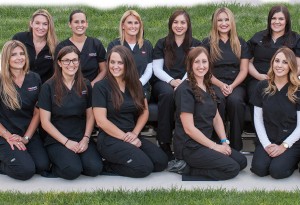
Sunscreen 101 by Your Marque Team
 Everybody needs sunscreen. You may think you only need to wear it during the warm summer months, but in reality you should apply it daily. The sun’s UVA and UVB rays can reach you at any given time, even on a cloudy day or through a glass windowpane.
Everybody needs sunscreen. You may think you only need to wear it during the warm summer months, but in reality you should apply it daily. The sun’s UVA and UVB rays can reach you at any given time, even on a cloudy day or through a glass windowpane.
It is important to know a little bit about the sun’s UVA (Ultraviolet A which is long-wave) and UVB (Ultraviolet B which is short-wave) rays in order to understand the importance of sunscreen. The sun’s rays can cause premature skin aging, eye damage, and skin cancers. They can also suppress the immune system.
The UVA rays account for most of our sun exposure throughout our lifetime. UVA penetrates the skin more deeply than the UVB rays. Tanning booths primarily emit UVA rays, as UVA is the dominant tanning ray. Tanning, over time, can cause damage to the skin which can lead to skin cancer. UVA rays are the rays that can get you all year long- even through the clouds and glass.
The UVB rays play a key role in the development of skin cancer. These rays cause the skin reddening and sunburn and tend to damage the more superficial epidermal layers of skin. UVB rays are usually more intense between the hours of 10 am – 4 pm in the months of April to October. But they can still cause damage at any time so don’t get a false sense of protection during other times of the year. They get more intense at high altitudes and on reflective surfaces, such as snow and ice, which bounce back up to 80% of the rays so they hit skin twice. The UVB rays don’t penetrate through glass.
Now, armed with your knowledge of UVA and UVB rays, you should understand the importance of wearing sunscreen throughout the year. So, what type of sunscreen should you purchase, and how do you protect yourself?
Sunscreen is measured by its Sun Protection Factor or SPF. That doesn’t mean the amount of protection necessarily, rather how long it will take for the skin to redden without protection. For instance, SPF 15 screens 93% of the sun’s UVB rays, SPF 30 protects 97%, and SPF 50 protects 98%. The recommendation from the American Academy of Dermatology is to wear an SPF 30 or higher.
Since UVA and UVB rays are harmful, you should protect yourself from both. You want to make sure that your sunscreen has ingredients that screen for UVA, plus SPF 30 or higher containing the following ingredients: oxybenzone, titanium dioxide, and zinc oxide. You may also want to look for the phrases multi-spectrum, broad spectrum, or UVA/UVB Protection on the labels. After, you just need to apply it, generously – at least 2 tablespoons all over your body and be sure to re-apply every two hours. The correct sunscreen with proper application will allow you to enjoy the sunshine without impacting your health. In sum, the lyrics from Baz Luhrmann’s famous song say it all, “Ladies and Gentleman of the class of ’99, if I could offer you only one tip for the future, sunscreen would be IT.”
The information provided is for general interest only and should not be misconstrued as a diagnosis, prognosis or treatment recommendation. This information does not in any way constitute the practice of medicine, or any other health care profession. Readers are directed to consult their health care provider regarding their specific health situation. Marque Medical is not liable for any action taken by a reader based upon this information.
